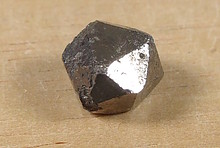Home PageAbout MindatThe Mindat ManualHistory of MindatCopyright StatusWho We AreContact UsAdvertise on Mindat
Donate to MindatCorporate SponsorshipSponsor a PageSponsored PagesMindat AdvertisersAdvertise on Mindat
Learning CenterWhat is a mineral?The most common minerals on earthInformation for EducatorsMindat ArticlesThe ElementsThe Rock H. Currier Digital LibraryGeologic Time
Minerals by PropertiesMinerals by ChemistryAdvanced Locality SearchRandom MineralRandom LocalitySearch by minIDLocalities Near MeSearch ArticlesSearch GlossaryMore Search Options
The Mindat ManualAdd a New PhotoRate PhotosLocality Edit ReportCoordinate Completion ReportAdd Glossary Item
Mining CompaniesStatisticsUsersMineral MuseumsClubs & OrganizationsMineral Shows & EventsThe Mindat DirectoryDevice SettingsThe Mineral Quiz
Photo SearchPhoto GalleriesSearch by ColorNew Photos TodayNew Photos YesterdayMembers' Photo GalleriesPast Photo of the Day GalleryPhotography
╳Discussions
💬 Home🔎 Search📅 LatestGroups
EducationOpen discussion area.Fakes & FraudsOpen discussion area.Field CollectingOpen discussion area.FossilsOpen discussion area.Gems and GemologyOpen discussion area.GeneralOpen discussion area.How to ContributeOpen discussion area.Identity HelpOpen discussion area.Improving Mindat.orgOpen discussion area.LocalitiesOpen discussion area.Lost and Stolen SpecimensOpen discussion area.MarketplaceOpen discussion area.MeteoritesOpen discussion area.Mindat ProductsOpen discussion area.Mineral ExchangesOpen discussion area.Mineral PhotographyOpen discussion area.Mineral ShowsOpen discussion area.Mineralogical ClassificationOpen discussion area.Mineralogy CourseOpen discussion area.MineralsOpen discussion area.Minerals and MuseumsOpen discussion area.PhotosOpen discussion area.Techniques for CollectorsOpen discussion area.The Rock H. Currier Digital LibraryOpen discussion area.UV MineralsOpen discussion area.Recent Images in Discussions
Mineralogical ClassificationHydrogen-bonding system in amarillite
11th Jan 2017 18:24 UTCMarco E. Ciriotti Manager
▪ Yang, Z. & Giester, G. (2016): Hydrogen-bonding system in amarillite, NaFe(SO4)2(H2O)6: the structure refinement. European Journal of Mineralogy, 28, 953-958.
Abstract:
The crystal structure of amarillite, NaFe(SO4)2(H2O)6, was redetermined from a single crystal from Xitieshan, Qinghai Province, China. In complement to previous work, all non-H atoms were refined with anisotropic displacement parameters and H-atoms were located by difference Fourier methods and refined from X-ray diffraction data. The structure can be formally described by octahedral–tetrahedral “sheets” of corner-sharing [NaO4(H2O)2] octahedra and (SO4) tetrahedra, which constitute a structural sheet with composition [Na(SO4)2(H2O)2]3- extending parallel to (001). The resultant sheets are held together by interstitial Fe3+ cations and hydrogen bonds. The [NaO4(H2O)2] octahedra donate four hydrogen bonds to the oxygen atoms of neighboring (SO4) tetrahedra, thus strengthening connections in three dimensions. The interstitial [FeO2(H2O)4] octahedra are linked by eight hydrogen bonds to the vertices of the adjacent octahedral–tetrahedral sheets, further stabilizing the crystal structure of amarillite. The FTIR spectrum of amarillite shows a strong absorption between 3000 cm–1 and 3500 cm–1 with maxima at ∼3110cm–1 and ∼3442 cm–1, which is in accordance with the O–H···O distances derived from structure data.




Mindat.org is an outreach project of the Hudson Institute of Mineralogy, a 501(c)(3) not-for-profit organization.
Copyright © mindat.org and the Hudson Institute of Mineralogy 1993-2024, except where stated. Most political location boundaries are © OpenStreetMap contributors. Mindat.org relies on the contributions of thousands of members and supporters. Founded in 2000 by Jolyon Ralph.
Privacy Policy - Terms & Conditions - Contact Us / DMCA issues - Report a bug/vulnerability Current server date and time: April 26, 2024 23:49:12
Copyright © mindat.org and the Hudson Institute of Mineralogy 1993-2024, except where stated. Most political location boundaries are © OpenStreetMap contributors. Mindat.org relies on the contributions of thousands of members and supporters. Founded in 2000 by Jolyon Ralph.
Privacy Policy - Terms & Conditions - Contact Us / DMCA issues - Report a bug/vulnerability Current server date and time: April 26, 2024 23:49:12











